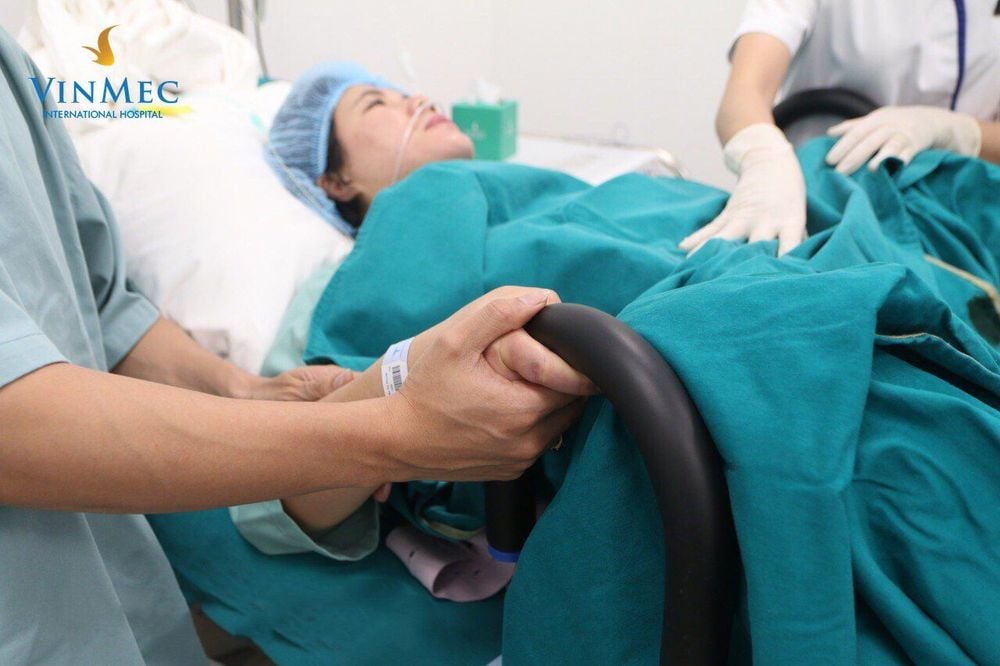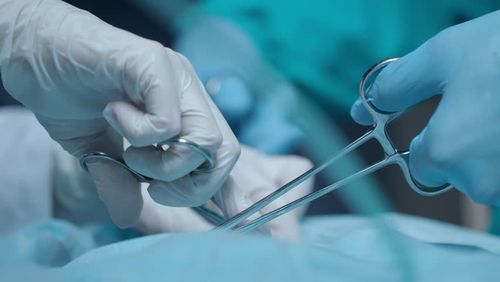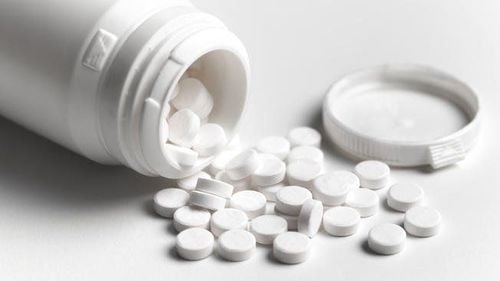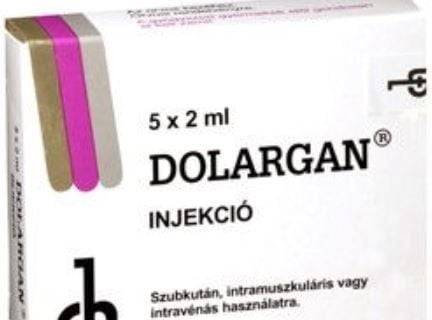This is an automatically translated article.
The article was professionally consulted by BSCK I Nguyen Xuan Tinh - Anesthesiologist - Resuscitation - Department of General Surgery - Vinmec Phu Quoc International General Hospital.Spinal anesthesia is a procedure that is being widely applied in lower abdomen, lower extremity or urological surgery. However, the drugs used in this method of anesthesia can cause many dangerous side effects, typically headaches after spinal anesthesia.
1. An overview of spinal anesthesia
1.1 What is spinal anesthesia?
Anatomically, there are 3 layers of membranes covering the spinal cord in order from outside to inside: dura mater - arachnoid - soft membrane. Spinal anesthesia is an anesthetic procedure in which a doctor injects numbing medicine or pain medication into the space between the arachnoid and soft membranes of the spine. Anesthesia numbs nerve transmissions from the spinal cord, helping to relieve pain in certain areas of the body.The advantages of spinal anesthesia are simple operation, quick action, low failure rate, minimal drug use, and good muscle relaxation. Spinal anesthesia is often applied to cases such as: Orthopedic surgery of joints or bones of the leg, surgery for inguinal hernia, varicose veins, hemorrhoidectomy, surgery of blood vessels in the legs, treatment of uterine prolapse. , cesarean section , urological surgery (bladder, prostate, genitals),...

Gây tê tuỷ sống mổ lấy thai
1.2 Common problems after spinal anesthesia
Neurological complications: Paralysis, nerve damage, cauda equina syndrome, headache; Cardiovascular complications: Low blood pressure, bradycardia; Respiratory complications: Shortness of breath, apnea; Other complications: Infection, back pain, urinary retention, itching, tremor,...2. Causes of headache after spinal anesthesia
Headache is a common side effect of spinal anesthesia, especially in women and young adults. Headaches after spinal anesthesia can last for weeks.2.1 Causes of headache after spinal anesthesia
The cause of headache after spinal anesthesia is the leakage of cerebrospinal fluid through the dural perforation. The phenomenon of cerebrospinal fluid leakage reduces intracranial pressure, causing sensitive intracranial structures (such as veins, meninges, cranial nerves, ...) to be pulled downwards, causing headaches with symptoms. Characterized by increased pain when the patient is in an upright position. In addition, a decrease in intracranial pressure can also cause dilation of intracranial blood vessels with headache manifestations.2.2 Symptoms
The patient presented with frontal - occipital headache, pain after anesthesia about 12 - 36 hours, pain increased when standing upright and decreased when lying supine. When applying pressure to the patient's abdomen in the supine position, it can reduce the severity of headaches. Combined symptoms include neck stiffness, tinnitus, photophobia, visual disturbances, and cranial nerve palsies.Need to differentiate headache after spinal anesthesia from other conditions such as infection, meningitis, cerebral venous occlusion, cerebral infarction, migraine headache, subdural hematoma, hematoma in the cavity spinal cord, stress headache, high blood pressure headache, dehydration, gas in the brain,...

Đau đầu sau gây tê tuỷ sống
2.3 Preventive measures - treatment
To limit headaches after spinal anesthesia, many measures have been studied and applied such as:Improvement of spinal needles to limit the leakage of cerebrospinal fluid through the dural perforation, reducing headaches effective; Using caffeine, cosyntropin, theophylline, sumatriptan,... The mechanism of caffeine's effect on headache relief after spinal anesthesia is to reduce pressure in the brain, helping to constrict cerebral blood vessels. Clinically, in order to limit headache side effects, doctors often use small-headed anesthetic needles, pencil-shaped needles (separate the epidural fibers, helping to close the epidural hole faster); Let the patient drink coke and advise the patient to rest more, limit changing positions.
Usually, this symptom goes away on its own within 7 days. If headaches cause discomfort, patients can use pain relievers under the direction of the doctor. In case the headache does not go away on its own after 7 days or the patient has a severe headache, they should immediately go to a medical facility for examination and support. The doctor can give the patient pain medication or interventional therapy with autologous blood smear, injecting fluid into the epidural space, injecting Morphine into the epidural space, surgical treatment,...
Part Most cases of headache after spinal anesthesia will resolve on their own. To limit this risk, measures can be applied such as choosing the right technique, anesthetic needle size, needle shape, using adjuvant drugs,...
With the goal of giving patients the best possible outcomes. With the most advanced medical techniques in the world, limiting complications and risks, Vinmec International General Hospital has applied the ESP technique. This is an analgesia technique that can completely replace analgesia morphine in open heart surgery and thoracic surgery in both adults and children with many outstanding advantages:
Helps to relieve pain comprehensively, without complications, shorten the time of active resuscitation, eliminate the risk of postoperative pain and chronic pain in 96% of heart surgery patients. No direct effect on spinal cord and anatomical structures of nerves Safer due to ultrasound guidance There were no cases of needing to add morphine analgesia when skin incision, sternum saw. Significant reduction in the dose of painkiller Sufentanil during surgery. Pain level after extubation, exercise, and extubation (VAS <3). There were no complications of hematoma, hypotension or excessive anesthesia, respiratory depression, anesthetic toxicity. Doctor Nguyen Xuan Tinh has more than 18 years of experience studying and working in the field of Anesthesia - Resuscitation. Before working as an anesthesiologist at the Department of General Surgery - Vinmec Phu Quoc International General Hospital, Dr. Tinh worked for a long time at Cam Xuyen Tinh District General Hospital, Ha Tinh.
To register for an examination at Vinmec International General Hospital, you can contact the nationwide Vinmec Health System Hotline, or register online HERE.














